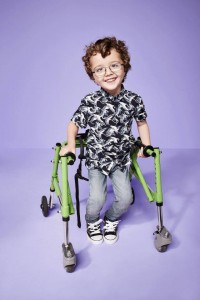For years, different modes of technology have been used to improve the quality of life of people who have various developmental disabilities . However, the varied use of technology for people with learning difficulties continues to receive limited attention, despite the fact that technology tends to be a high interest area for many of these people.
This article will discuss how various modes of technology (including technology designed as augmentative communication systems), can be used for people with learning difficulties to increase or improve their:
• Overall understanding of their environment;
• Expressive communication skills;
• Social interaction skills;
• Attention skills;
• Motivation skills;
• Organization skills;
• Academic skills;
• Self help skills;
• Overall independent daily functioning skills.
What is Assistive Technology?
According to the Technology-Related Assistance for Individuals with Disabilities Act of 1988 an assistive technology means any item, piece of equipment, or product system, whether acquired commercially, off-the-shelf, modified or customized, that is used to increase, maintain, or improve functional capabilities of individuals with disabilities. Assistive technology service is any service that directly assists an individual with a disability in the selection, acquisition, or use of an assistive technology device.
Typically, people with learning difficulties process visual information easier than auditory information. Any time we use assistive technology devices with these people, we’re giving them information through their strongest processing area (visual). Therefore various types of technology from “low” tech to “high” tech, should be incorporated into every aspect of daily living in order to improve the functional capabilities of people with learning difficulties.
Visual Representation Systems
It is important to determine which visual representation system is best understood by the child, and in what contexts. Various visual systems, such as objects, photographs, realistic drawings, line drawings, and written words, can be used with assorted modes of technology, as long as the child can readily comprehend the visual representation.
Some people may need different visual representation systems in different situations. This may be dependent upon numerous factors, such as the skill being taught, as well as the unique characteristics of learning difficulties: attending, organization, distractibility, etc.
Example: A child may use real objects for his visual schedule, as the objects appear to give him more information as to where he’s going and what’s coming up next, as well as to help him remain more focused during the transition. However, this same child may use photographs or line drawings in a picture exchange in order to communicate expressively.
Some researchers suggest that, for most people, it is best to start with a visual representation system of line drawings, and move to a more concrete representation system of photographs or objects needed.
Example: A teacher took photographs of the various teachers that a child with learning difficulties encountered at school, in order to help him learn the names of his teachers. When reviewing the names of the teachers in the photographs, the child referred to the photograph of a particular teacher as “Spain”. Upon further review of this photo, the teacher realized that in the background, barely visible, was the corner of a map of Spain. Although the teacher’s face was the prominent feature in the photo, the child processed the minimally visible map as the most prominent feature and thus labeled the photograph according to this feature.
Example: If a child prefers the color red, and the Picture Communication Symbol (PCS) for “lunch” has a red apple as well as a brown sandwich and orange juice, the child may only process the apple, as it contains his preferred color. The child may not even process the image, but attend only to the color red. Therefore, the PCS becomes non-meaningful to the child.

